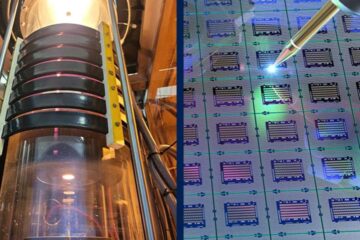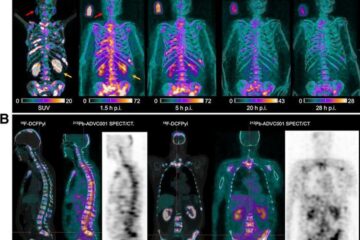Melanoma risk only partially associated vith exposure to UVB from sunlight

Researchers at The University of Texas M. D. Anderson Cancer Center have found that the risk of developing melanoma, the most deadly form of skin cancer, is only partially associated with exposure to ultraviolet B (UVB) radiation, the rays in sunlight that increase in summer and cause sunburn.
The report in the Dec. 21 issue of the Journal of the National Cancer Institute also indicates that only nonmalignant skin cancers (basal and squamous cell carcinoma) are strongly associated with exposure to UVB radiation.
That does not mean, however, that sunbathing poses a minimal risk of developing melanoma. Researchers say that ultraviolet A (UVA) radiation, the rays in sunlight that reach the deeper layers of skin and are associated with signs of aging, can damage the DNA in melanocytes, the pigment-producing cells that give rise to melanoma.
“Although we have refined the common wisdom that excess sun exposure is always associated with increased risk of skin cancer, the take-home message for the public is still the same – limit sun exposure and use a sunscreen that blocks both UVA and UVB rays,” says the study’s lead investigator, Qingyi Wei, M.D., Ph.D., professor in the Department of Epidemiology.
The study is a painstaking analysis of the ability of UVB radiation to damage a cell’s chromosomes. Chromosomal injury is one way cells can become cancerous; damage to the genes that make up the chromosome is another, and Wei already has shown in previous studies that melanoma patients often have a reduced capacity to repair the DNA damage that results from UVB exposure.
In the novel study, researchers looked at how often chromosomes break in cells from skin cancer patients compared with cells from a control group.
Wei and his team of 16 collaborators at M. D. Anderson gathered white blood cells from 469 skin cancer patients treated at M. D. Anderson (238 of whom were diagnosed with melanoma) as well as from 329 cancer-free control subjects.
Using the theory that the ability to induce breaks in a cell’s chromosome is, in part, based on a person’s genes, and would therefore hold true for all types of body cells, the investigators exposed the blood cells to excess UVB exposure. These findings were linked to whether each of the study participants had one of the three forms of skin cancer. They found that UVB radiation affects cell chromosomes more severely in patients with nonmalignant basal and squamous cell carcinoma than those in melanoma patients. The frequency of UVB-induced chromosome breaks was higher in nonmalignant skin cancer patients than in the control group, but was the same in melanoma patients and the control group. In fact, a higher frequency of chromosomal breaks was associated with a more than twofold-increased risk for both basal cell and squamous cell carcinoma, Wei says.
These findings indicate that in skin cells it is better to have broken chromosomes that cause cells to die or acquire a “simple,” treatable cancer, than for the skin cells to remain intact but sustain genetic damage that can lead to much more serious cancer, Wei adds.
They also found a strong dose-response relationship among UVB radiation, chromosome breaks and squamous cell carcinoma. Sun exposure increases a person’s risk of developing squamous cell carcinoma. Investigators discovered, however, that the risk of developing basal cell carcinoma increases to a certain point, given exposure to UVB radiation, but does not continue to increase with excess sun exposure. These experimental data fit well to the incidence data of skin cancers in the general population.
Wei says these conclusions may help explain for why nonmalignant skin cancers are so common – more than 1 million cases are diagnosed each year in the United States – and why they are so easy to treat. Squamous skin cells lie near the top of the skin’s layers, while basal skin cells lie near the base of the skin’s layers. In both cases, these cells actively reproduce. When their chromosomes are damaged by sunlight, the cells often die or form a simple kind of cancer at the surface that is nonmalignant and easy to remove by surgery or treat in other ways, he says.
Melanoma, on the other hand, is now known to be resistant to chromosomal breaks from UVB radiation, which means that the cell’s chromosomes stay intact long enough to continually amass genetic damage from UVA radiation, according to previously published data. “This allows the cells to hang in there longer, potentially passing on genetic mutations to daughter cells which can result in a cancer that is not sensitive to treatment,” Wei says. “If you think of a chromosome as walls that hold up the house, which is the cell, and DNA as individual bricks, then in common squamous and basal cell carcinoma, UV in sunlight knocks down the walls, and usually these cells die or form a nonmalignant cancer,” says Wei.
“But if UV sunlight doesn’t hurt the walls too much, but endangers the house with broken bricks, this can form a much more malignant cancer in which the cell can continue to replicate, passing on to daughter cells genetic mutations that can lead to a dangerous cancer,” he says.
According to the National Cancer Institute, close to 60,000 cases of melanoma are expected in 2005, along with more than 7,700 associated deaths.
Media Contact
More Information:
http://www.mdanderson.orgAll latest news from the category: Life Sciences and Chemistry
Articles and reports from the Life Sciences and chemistry area deal with applied and basic research into modern biology, chemistry and human medicine.
Valuable information can be found on a range of life sciences fields including bacteriology, biochemistry, bionics, bioinformatics, biophysics, biotechnology, genetics, geobotany, human biology, marine biology, microbiology, molecular biology, cellular biology, zoology, bioinorganic chemistry, microchemistry and environmental chemistry.
Newest articles

Silicon Carbide Innovation Alliance to drive industrial-scale semiconductor work
Known for its ability to withstand extreme environments and high voltages, silicon carbide (SiC) is a semiconducting material made up of silicon and carbon atoms arranged into crystals that is…

New SPECT/CT technique shows impressive biomarker identification
…offers increased access for prostate cancer patients. A novel SPECT/CT acquisition method can accurately detect radiopharmaceutical biodistribution in a convenient manner for prostate cancer patients, opening the door for more…

How 3D printers can give robots a soft touch
Soft skin coverings and touch sensors have emerged as a promising feature for robots that are both safer and more intuitive for human interaction, but they are expensive and difficult…





















